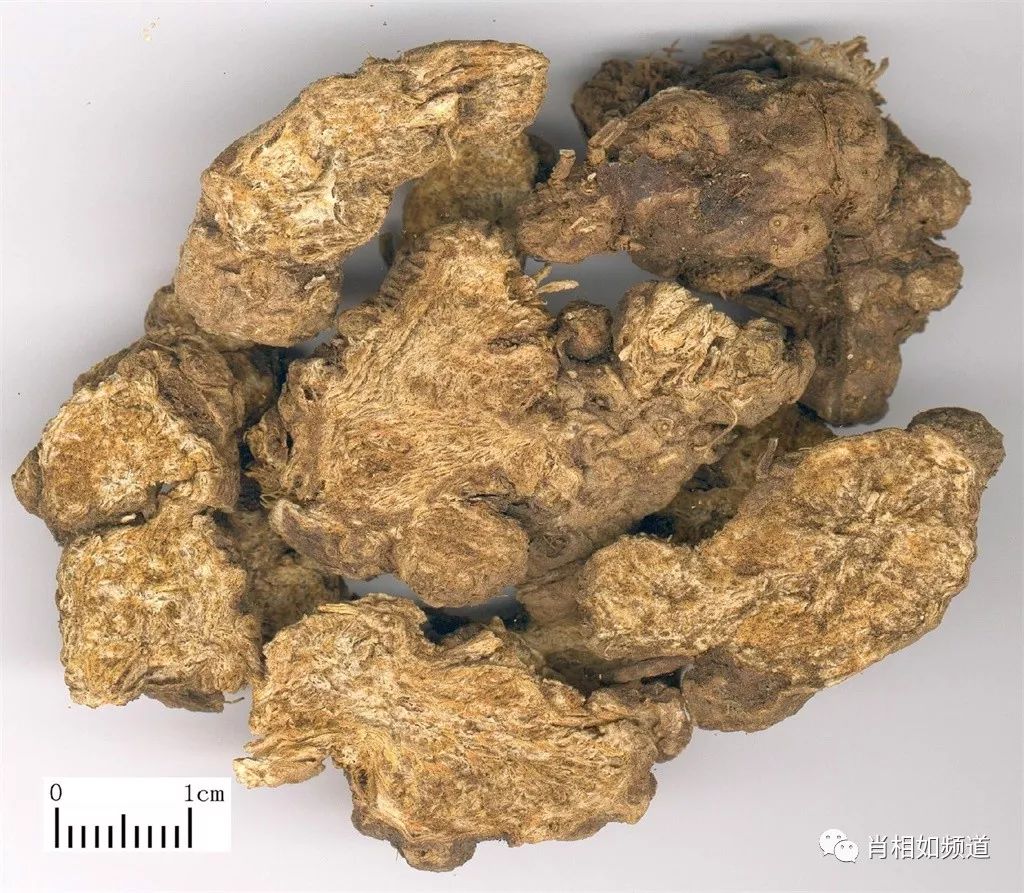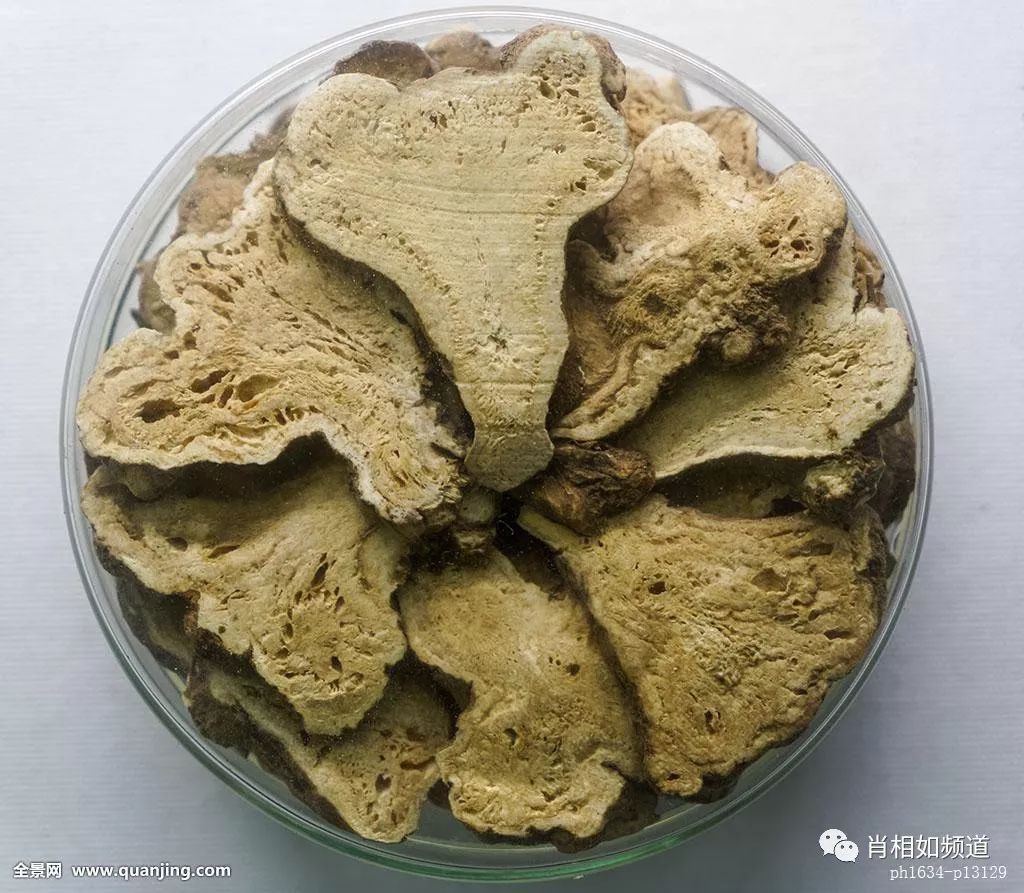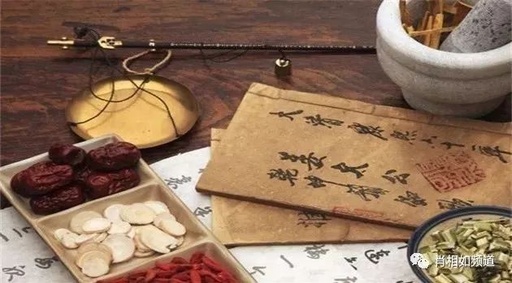Introduction: It is essential to distinguish between Cang Zhu (Atractylodes lancea) and Bai Zhu (Atractylodes macrocephala) in clinical applications to ensure both can exert their respective effects effectively.
Cang and Bai Zhu are both commonly used medicinal herbs in clinical practice. Historical texts such as the Shennong Bencao Jing and Shanghan Zabing Lun from the Han Dynasty have documented their uses, but the primary issue has been the confusion between the two. This vague understanding has persisted for hundreds of years.

① Cang Zhu

② Bai Zhu

Upon examining Cang and Bai Zhu, while they share some functional similarities, they also have distinct differences.
For instance, Cang Zhu has the functions of drying dampness, strengthening the spleen, promoting diuresis, inducing sweating, and relieving depression. Its clinical applications include:
1. Treating wind-cold-damp bi syndrome, often combined with Huang Bai (Phellodendron) for effective treatment of atrophy syndrome;
2. Addressing diarrhea due to damp obstruction, fullness, poor appetite, and edema, as it effectively dries dampness and promotes diuresis;
3. Used with Zhu Dan (Pig Gallbladder) and Shi Jue Ming (Abalone Shell) to treat night blindness.
Bai Zhu has the functions of strengthening the spleen, benefiting qi, drying dampness, promoting diuresis, resolving phlegm, and calming the fetus. Its clinical applications include:
1. For those with spleen deficiency, abdominal distension, diarrhea, and indigestion, Bai Zhu can help tonify spleen qi;
2. Used for phlegm-damp and edema conditions;
3. For fetal restlessness, it can be combined with Ren Shen (Ginseng) for deficiency, Huang Qin (Scutellaria) for heat, and Ai Ye (Mugwort) for cold, all achieving the goal of calming the fetus.

The differences in the functions of Cang and Bai Zhu are evident, yet their commonality—strengthening the spleen and drying dampness—still necessitates clear differentiation.
It can be considered that Bai Zhu primarily dries internal dampness, while Cang Zhu addresses both internal and external dampness.
Regarding Cang Zhu’s ability to strengthen the spleen, it relies on its capacity to dry dampness and promote diuresis, as the spleen prefers dryness and dislikes dampness. Cang Zhu’s strong bitter and acrid nature is most effective at drying dampness and promoting diuresis, thus allowing the spleen to function healthily; Bai Zhu’s spleen-strengthening effect, in addition to drying dampness, is more importantly achieved through its sweet flavor, which tonifies spleen qi, invigorating its function.
From this, we can see that Cang Zhu has a strong, bitter, and robust nature, while Bai Zhu is sweet, moist, and harmonious; Cang Zhu excels at drying dampness, while Bai Zhu is better at tonifying the spleen; Cang Zhu treats spleen excess, while Bai Zhu treats spleen deficiency.
For those with excess dampness, Cang Zhu is recommended; for those with spleen weakness, Bai Zhu is preferred.

Here, we observe the characteristics of both herbs through the principles of several commonly used formulas.
Formulas suitable for Cang Zhu:
1. Ping Wei San, a formula for dispelling dampness and turbid accumulation, uses Cang Zhu as the monarch herb, taking advantage of its bitter and acrid properties to dry dampness and regulate the spleen. Zhang Jingyue states: “Ping Wei San is designed to treat imbalance. It is primarily for strong stomach and excess evil, thus its nature is spicy, dry, and bitter, enabling it to disperse…”;
2. Er Miao Wan, a formula for eliminating damp-heat, treats damp-heat excess in the lower jiao, leading to relaxed tendons and atrophy syndrome. It is effective when the righteous qi is not deficient but the evil is strong.
Although this condition is described as damp-heat excess in the lower jiao, effective treatment requires addressing the root cause. Therefore, using the spicy and bitter, warm, aromatic, and drying Cang Zhu to dry spleen dampness, combined with the bitter and cold Huang Bai to clear lower jiao damp-heat, treats both the symptoms and root cause, benefiting both upper and lower jiao;
3. Cang Zhu Bai Hu Tang, a formula for clearing heat and drying dampness, is suitable for conditions where dampness of the Taiyin meets heat of the Yangming, presenting with damp-warm syndrome.
This formula combines Bai Hu Tang to clear heat with the spicy and drying Cang Zhu to eliminate dampness.
Formulas suitable for Bai Zhu:
1. Shi Pi Yin, a formula for strengthening the spleen and returning yang, transforming dampness and promoting diuresis, treats conditions of middle yang deficiency, where the transformation is weak, and internal dampness leads to swelling.
The root cause of this edema is spleen deficiency. All methods of sweating, purging, or attacking are inappropriate; the correct treatment should strengthen the spleen to transform dampness and promote yang to facilitate diuresis. This formula uses Bai Zhu as the monarch herb, indicating its ability to strengthen the earth and dry dampness, thus compensating for deficiencies and solidifying the middle jiao;
2. Si Jun Zi Tang, a formula for tonifying the spleen and stomach, is essential for those with spleen and stomach weakness. Moreover, variations of Si Jun Zi Tang have become other formulas, demonstrating the reliability of Si Jun Zi Tang in tonifying the middle.
Through the exploration of these commonly used formulas, it is evident that Ping Wei San, Er Miao Wan, and Cang Zhu Bai Hu Tang all utilize Cang Zhu rather than Bai Zhu, indicating the intention to leverage Cang Zhu’s drying dampness properties.
Conversely, Shi Pi Yin and Si Jun Zi Tang both utilize Bai Zhu instead of Cang Zhu, clearly indicating Bai Zhu’s role in tonifying the spleen.

The above analysis of the applications of Cang and Bai Zhu aims to enhance their clinical utility.
However, the relative similarities and differences should be viewed flexibly rather than mechanically, as in clinical practice, Cang and Bai Zhu are often used together based on the needs of the condition to achieve synergistic effects.
Therefore, it is incorrect to assume that Cang Zhu can only dry dampness and Bai Zhu can only tonify the spleen; while one excels at drying dampness and the other at tonifying the spleen, this distinction is undeniable.
Note: This article is excerpted from Exposition of TCM Diagnosis and Treatment, published by Tianjin Science and Technology Press in June 1990. This public account is used solely for academic exchange; if there is any infringement, please contact for deletion, and please indicate the source when reprinting.
The cover image is sourced from the internet.
You may also like, click to read the original text:
What are the differences between Ren Shen (Ginseng) and Huang Qi (Astragalus), and between Dang Gui (Angelica) and Di Huang (Rehmannia)?
Besides gender, what other differences exist between men and women?
With Professor Fan Daming: Traditional Chinese and Western medicine must learn from each other.
Health | Happiness | Freedom
Xiao Xiangru Channel Long press the QR code to recognize and follow
Long press the QR code to recognize and follow
Welcome everyone to leave comments for discussion.
Submissions can be sent to: [email protected]
Sina search: Traditional Chinese Medicine Xiao Xiangru

